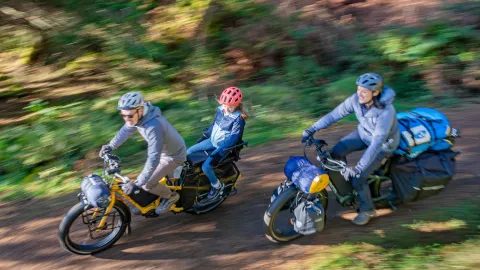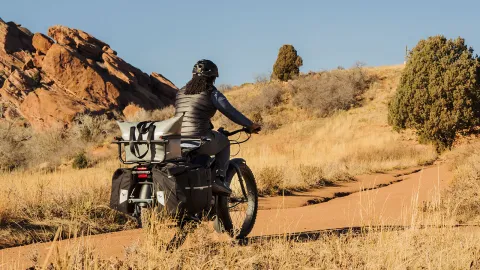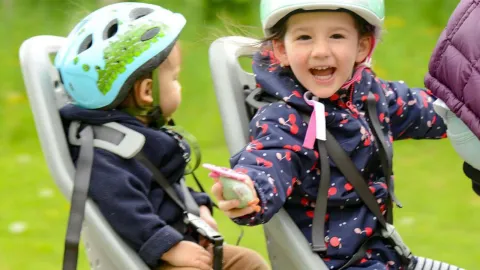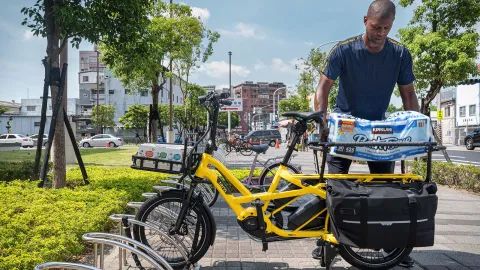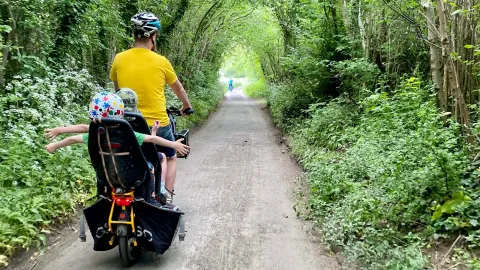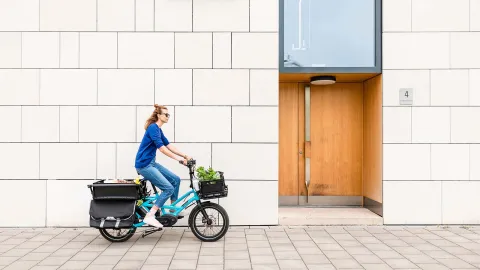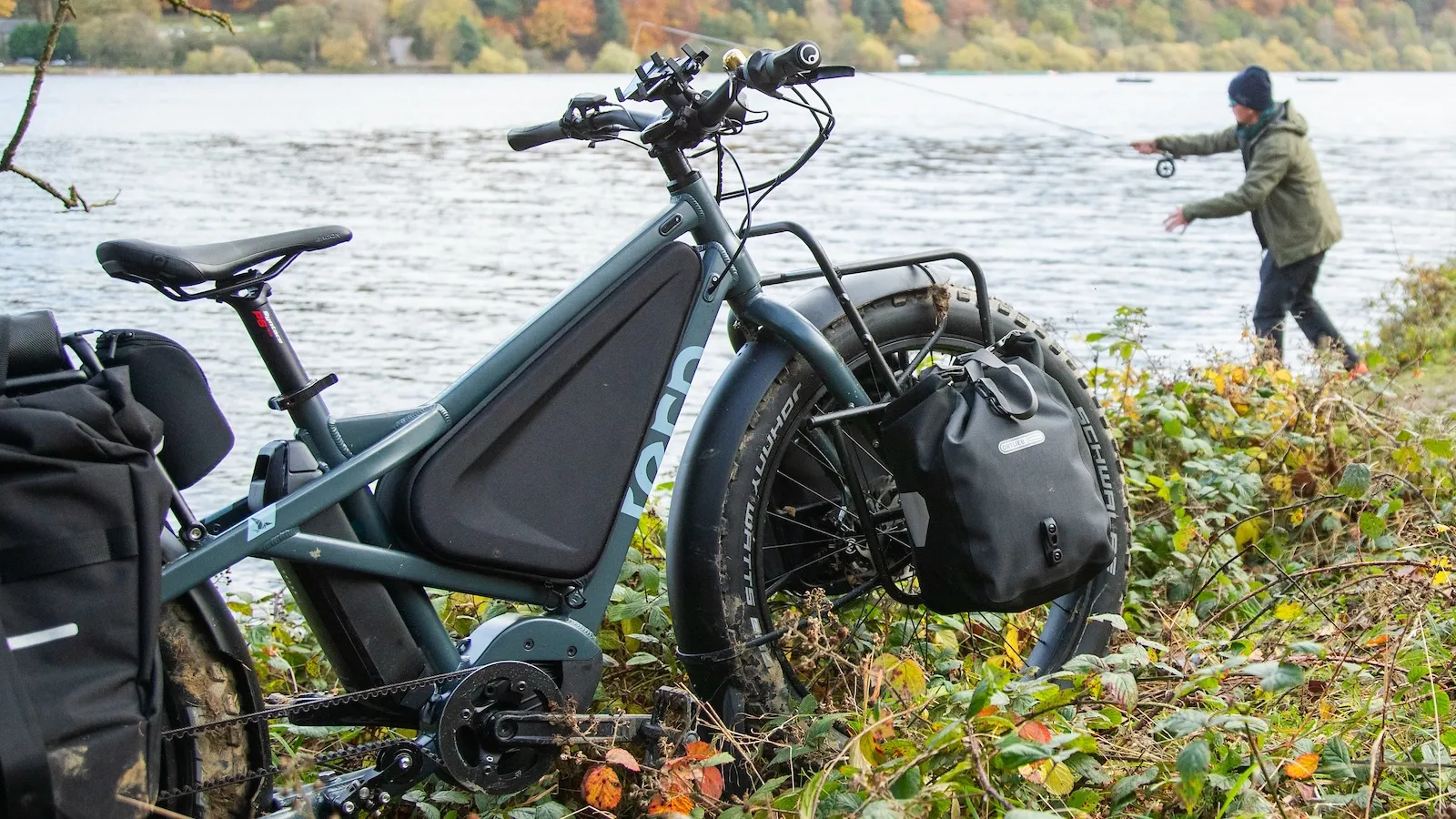
The Orox is an all-weather cargo bike designed to handle tough roads and heavy loads. But while this bike excels at carrying passengers and cargo in urban environments, it's when the road ends that the Orox truly shines.
If you've landed here, you either have an Orox or are considering one. This article is for you if you are somewhat new to off-roading and bikepacking, and aren't quite sure where to start. Don't worry, we've got you covered. We'll walk you through the essentials so you can take your Orox beyond city streets and enjoy your next adventure off the beaten path—safely.
Contents
- What makes the Orox great for off-road riding?
- What to check before the trip?
- When and where to go?
- What to bring?
- How to pack?
- What else?
- Bonus: How to clean your bike after off-roading
1. What makes the Orox great for off-road riding?
First off, if you need some convincing, here's why the Orox is the best choice for that epic bikepacking trip you've been dreaming of. The short answer: it's the hardware and the software. The longer answer:
Huge off-road cargo capacity
Most e-cargo bikes can carry heavy loads but aren't optimized for all-terrain riding. The Orox has a staggering max gross vehicle weight of 180 kg (397 lb) off-road (more on that later), which means you can pretty much bring all your camping gear, and food and essentials for several days.
Plus, you get to enjoy that extra peace of mind knowing your bike has been tested to ensure it can take a beating. Not by you, of course! The Orox frame and fork are both brutally tested by EFBE—one of the world's leading bike/component testing labs—to ensure they can haul heavy cargo while tackling tough terrain, safely and reliably, time after time.
Large volume tires with great traction
Riding over potholes is one thing, but riding over rocks, roots, and loose terrain is a whole 'nother thing. The Orox is equipped with large volume tires that offer excellent traction so you can stay focused on every climb or descent.
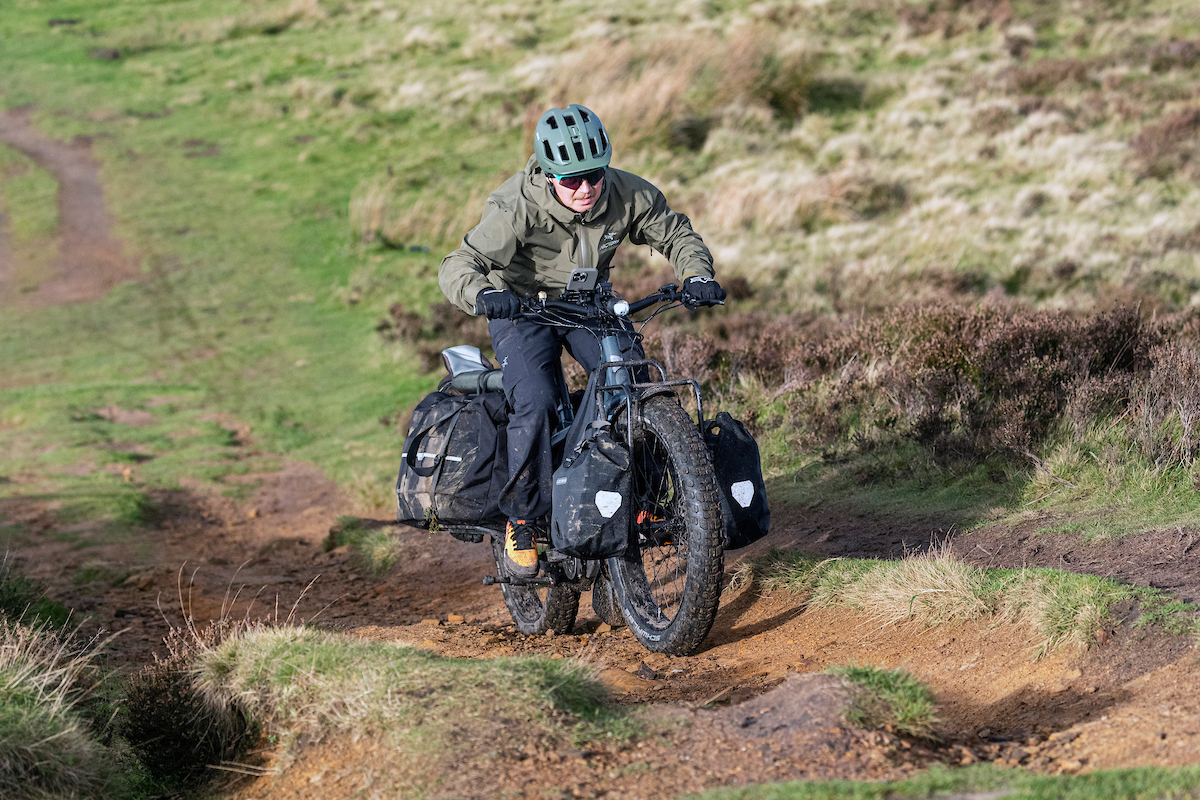
The latest (and greatest) Bosch Smart System
To make good use of its powerful Bosch Performance Line CX motor, the Orox offers four riding modes—and eMTB mode in particular gives you dynamic support according to your pedal pressure. As a cool feature of the eMTB mode, Extended Boost gives you a boost of power on demand to help you overcome obstacles and challenging terrain. To activate it mid-ride, simply kick down on your pedals.
In addition, the eBike Flow app lets you customize your riding experience by adjusting the level of motor assistance, maximum torque, and other features to fit your needs.
Image
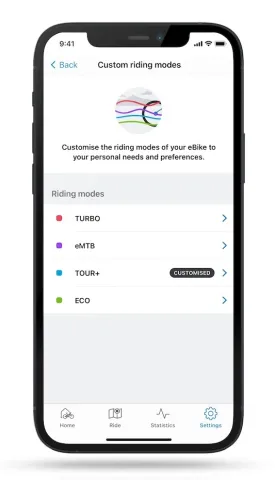
| Image
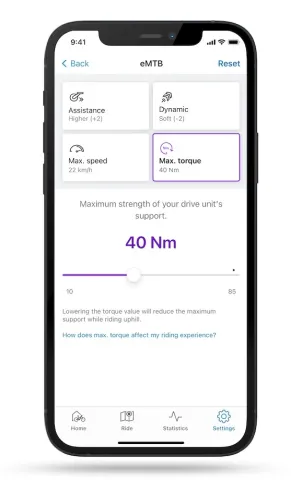
|
2. What to check before the trip?
As with any bikepacking or camping trip, there are a couple of things you'll need to check before you even start packing.
Have your bike checked by a qualified mechanic before (and after) going off-road
At a minimum, you should always make sure that your brakes are responsive, that your tires and tire pressure are OK, and that your chain or belt are well-maintained. Beyond that, your dealer can help do a thorough assessment of your bike's conditions and make sure that everything is in order before your trip.
After you return, another stop at the bike shop is essential to help spot any issues before they escalate, and make sure that your Orox is ready to take on its daily tasks once again.
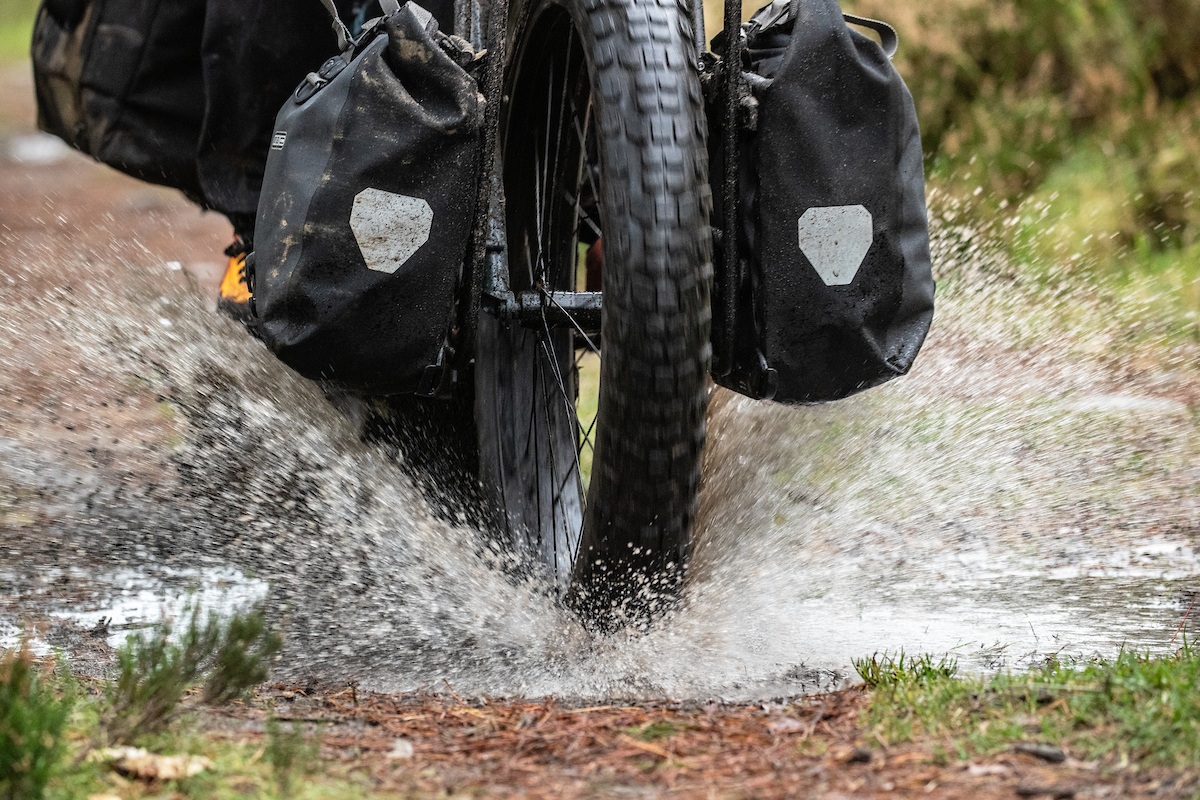
Have yourself checked as well!
If you are planning to spend several days in remote areas, do yourself a favor and go for a medical checkup before the trip. Making sure that you are in good physical condition is generally a good preventive measure if you are going to be in hard-to-reach trails or areas with little or no mobile signal.
3. When and where to go?
Our key advice for anyone new to off-roading is to do as much planning as possible. Some things to consider:
Spring and autumn are the best times to ride
The Orox is designed for all-weather riding, but that doesn't mean your first off-road adventure needs to be in the middle of the coldest, rainiest season. Plan something you'll enjoy! Spring and fall are the top seasons for hitting the road, with milder temperatures in most regions.
The world is your oyster, but start small
Your first off-road trip on the Orox doesn't have to be daunting or complicated. Starting small before planning longer trips is quite sensible advice, so consider starting with a location closer to home, or in an area you are already familiar with.
The things to keep in mind are essentially the same whether it's an overnight or several days on the road:
- Decide where to go, and for how many days.
- Calculate your battery range using the Bosch range calculator.
- Plan enough rest and refuel stops along your route, making sure each new stop is within your estimated battery range.
- Stay organized by using a route planner such as Komoot or Strava, which allows you to plan your own route or import existing ones. You can also plan your route using the eBike Flow app and transfer it to your Kiox 300 display for turn-by-turn directions.
4. What to bring?
First, some ground rules
Wherever you decide to go, keep in mind that riding off-road poses a new set of challenges, and that it limits what and how much you can carry on your bike.
The Orox is designed to tackle different types of terrain, from paved roads, to maintained gravel roads, to unimproved trails that may contain loose surface (such as mud), hardpack, and jutting roots and rocks. When riding on unimproved trails, do not carry passengers or exceed the max gross vehicle weight of 180 kg (397 lb).
Also, most riders are comfortable carrying a percentage of their body weight. As the terrain difficulty increases, it becomes harder to control a loaded bike, so you’d want to reduce this percentage to ensure safe and comfortable handling. When riding the Orox on unimproved trails, we recommend limiting your cargo weight (that is, the combined weight of all your cargo and accessories) to no more than 20% of your body weight.
To learn more about the max gross vehicle weight, including how it's calculated, check out the Orox Cargo Guide.
Tips from our resident expert
For this section of the article, we talked to Allen Chang, Product Engineer (and Off-Road Biking Enthusiast) at Tern. When he's not busy tearing bikes apart and 3D-modeling new products for Tern riders around the world, Allen can be found enjoying the great outdoors on his bike.
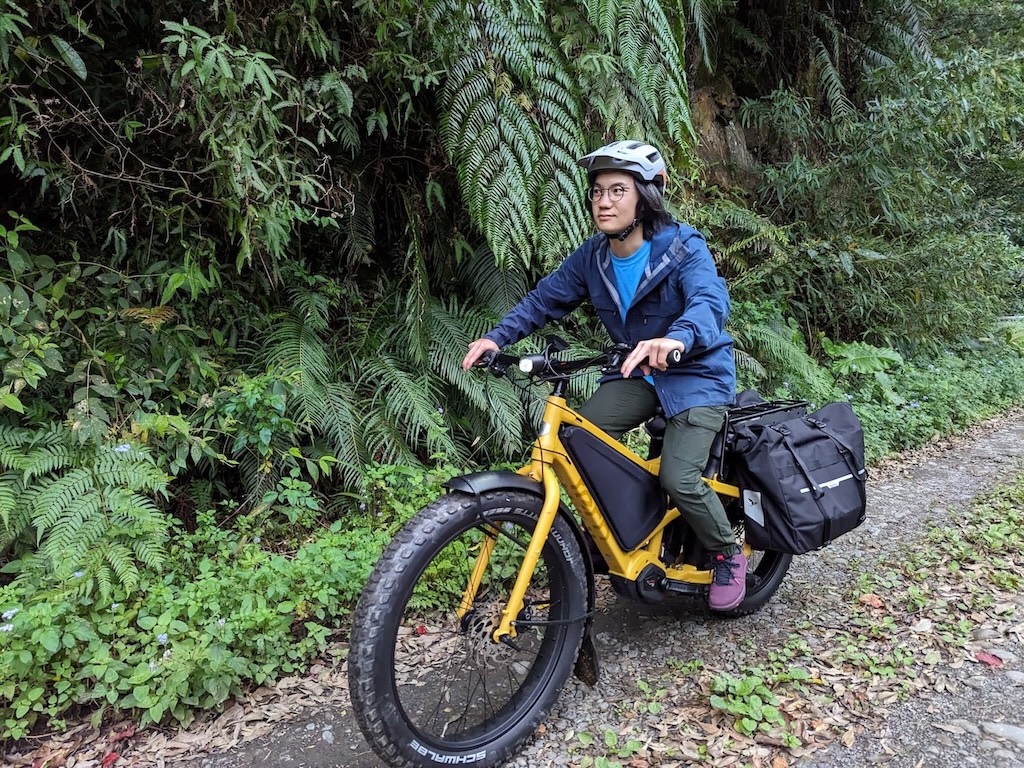
"A lot of people think planning is all about packing lists," says Allen. "But the first decision isn't what to bring, but who to bring. If you're new to off-roading and bikepacking, bring a buddy who can ride alongside you on a second bike. Riding alone in remote areas could be risky, no matter how safe that area is. Bringing a buddy isn't only great for the company—it's essential in case of an emergency, and that is true whether you're a new or an experienced rider."
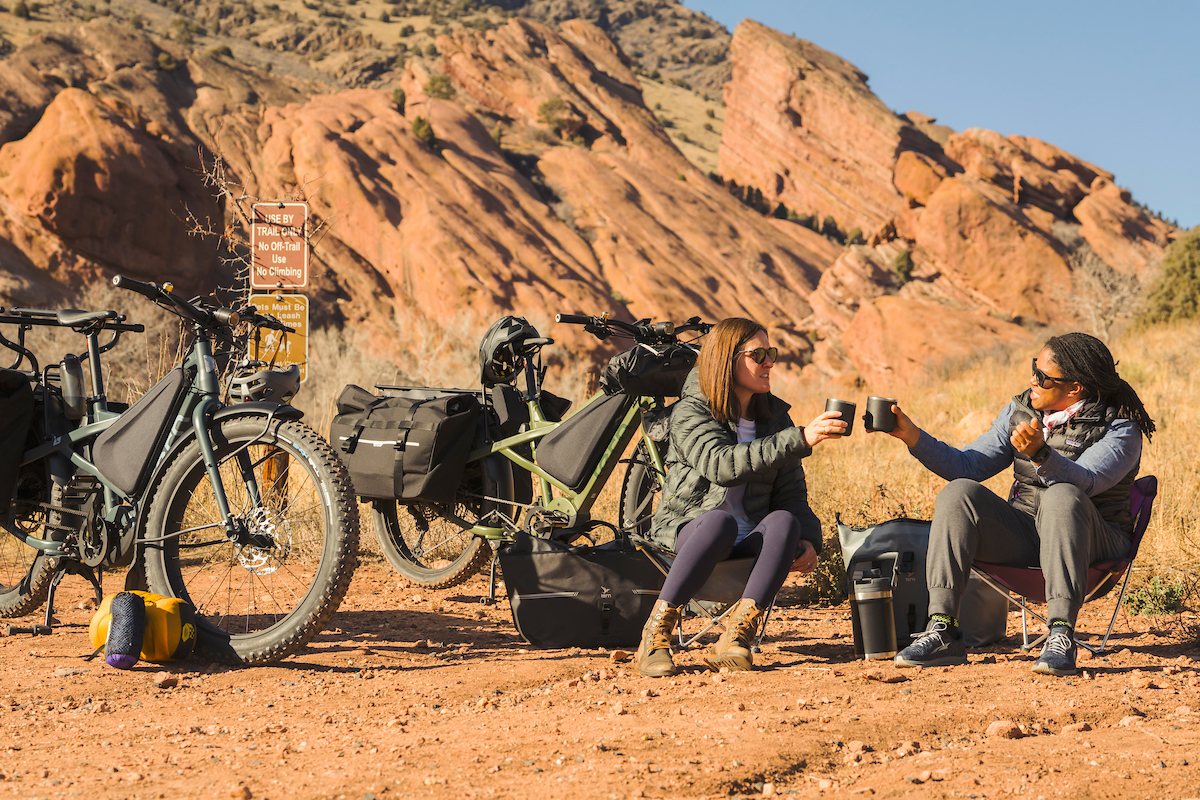
Our off-road packing list
Other than that, Allen recommends the following essentials:
- Clothes that account for daytime and nighttime temperature differences
- Toiletries
- Sleeping/camping gear
- Food and cooking supplies
- Printed map—remote areas may not have cellular service at all!
- Portable lights
- Portable charger—for your smaller devices (phone, lights, etc)
- Bosch charger
The packing list also includes some essentials that we hope you don't need to use on your first trip, but that you should pack anyway:
- First aid kit
- Flat tire kit—including tire levers, spare inner tubes, and a portable bike pump such as this one which our team member Pasi swears by for fast tire pressure adjustments on high-volume tires
- Bike repair tools
5. How to pack?
A rule of thumb is to carry most of your cargo on the rear of the bike, keeping heavier items closer to the ground. Distribute the load evenly on both sides, and make sure everything is secured.
In other words, heavier stuff (like your 15-inch cast iron skillet) should be at the bottom, while items that are either bulky or relatively lighter go on top (tent, sleeping bags).
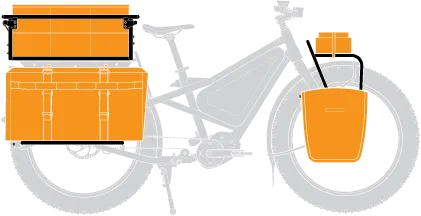
| 
|
Also important: When carrying cargo on the Orox’s front rack (an add-on we call the Trail Rack), make sure the cargo does not interfere with your steering and does not obstruct your vision.
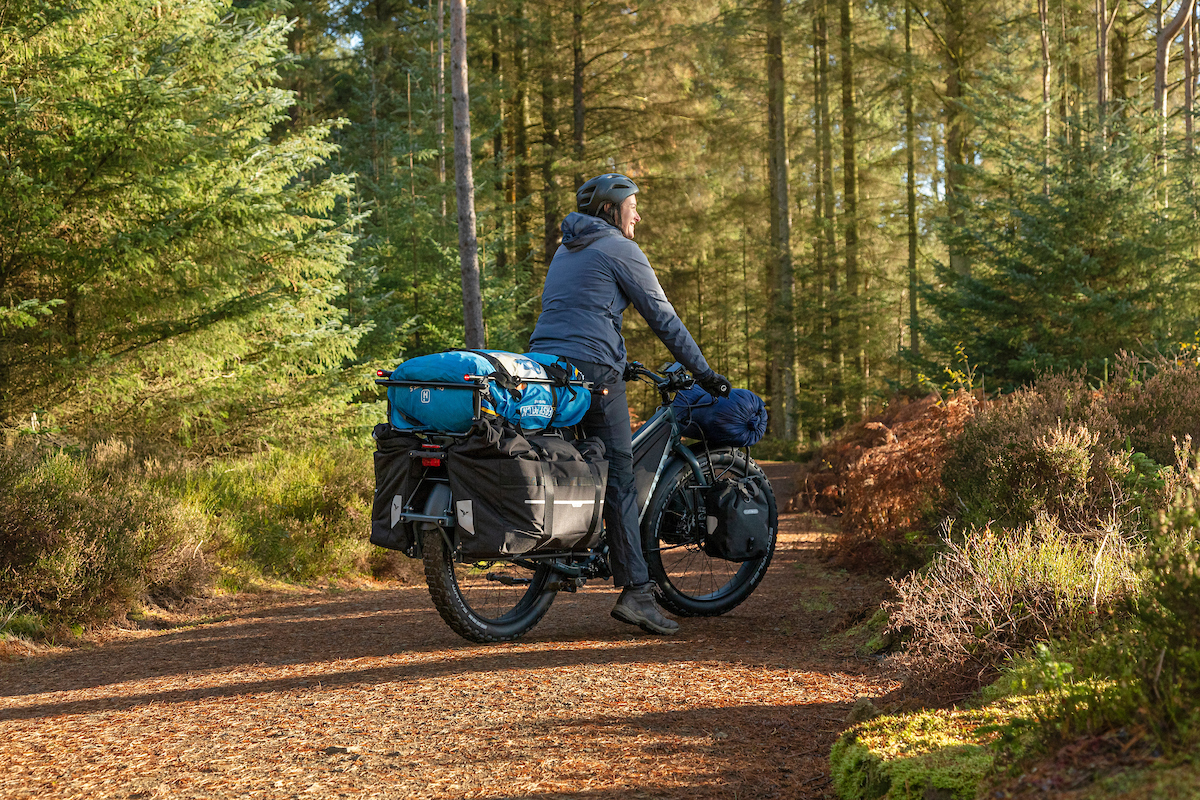
For more information on how to carry cargo and the best accessories for your bike, jump to this section of the Orox Cargo Guide.
6. What else?
So you (and your buddy) are all set and ready to go. What else do you need to know?
"Just go and have fun," says Allen. "Riding in remote places and possibly getting lost with no cell phone signal may sound like a challenge. But if you do a little bit of planning and get prepared, this is going to be a memorable experience, and possibly addictive enough to be the first of many off-road trips on two wheels."
Good luck exploring! And don't forget to share your experiences with other Orox riders in our Facebook group when you're back.
7. Bonus: How to clean your bike after off-roading
OK, one last thing. When you are finally back, and right after you unpack, remember to give your Orox a good wash before going for a more thorough maintenance check. Watch the video below for more:
Related Articles
Touring with your Tern e-bike is easier than you think! With the help of e-assist, you can enjoy the transformative experience of bike touring without worrying about fitness or headwinds. Read on for tips on planning your tour, managing battery range, and ensuring your bike is ready for the adventure.
